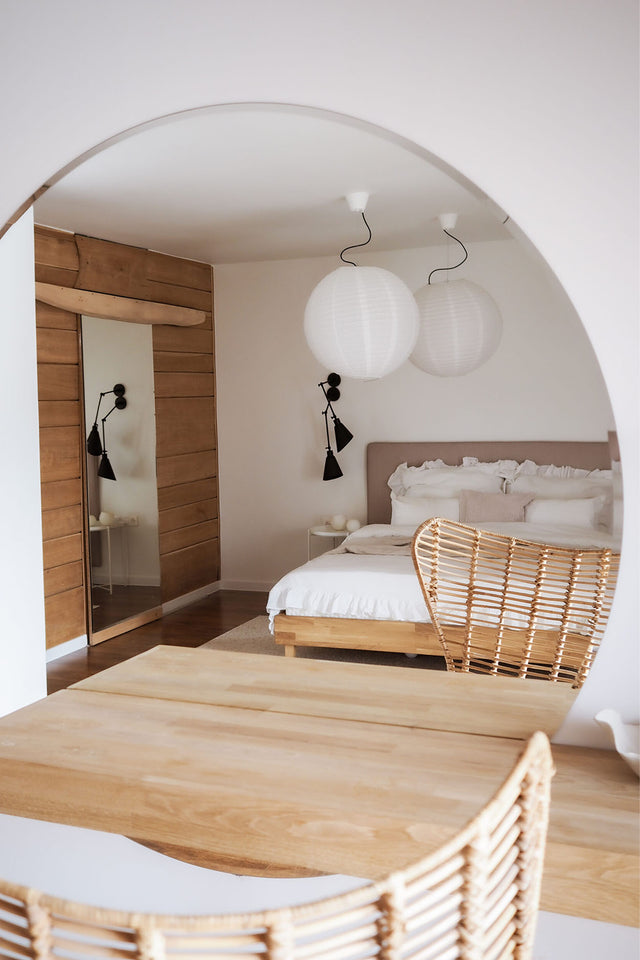Impact of air humidity on wooden furniture
More and more people in their homes and apartments are choosing wooden furniture. We are talking here not only about wardrobe furniture, a chest of drawers, a table and chairs, but also about stairs, kitchen countertops and floors. However, not everyone knows that wood, although it looks beautiful and is simply unpredictable, also requires special conditions and proper care to keep its beautiful appearance for many years. One of the key aspects is humidity. This high is especially associated with a steamy mirror or windows while cooking dinner. Unfortunately, this condition also negatively affects wooden furniture and walls. So what is the impact of temperature and humidity on our furniture and how can we counteract negative effects?

Moisture and mold on wooden furniture
Currently, in stores we can find various furniture made of wood. What's more, we can also change in types of wood in such a way as to best match the furniture to the interior design and current trends. The choice of just such furniture is of course very good, because we provide ourselves a beautiful arrangement, reliability and durability - but under one, key condition - we will care about them. Unlike the decor made of plastics, which are cheaper, but also worse quality, in the case of wooden products it is necessary to regularly care and protect against all harmful factors. Otherwise, we are exposed to the so -called Mushroom on furniture. This one will first appear on wood and natural sofas or armchairs. It is because of their natural origin that the discussed materials are so prone to the absorption of moisture and unpleasant odors, and in one way to fight such unwanted effects is proper impregnation and drying of air in the rooms.

What level of moisture and temperature affects the furniture - table
So what is the impact of high humidity and temperature on the appearance of mold on wooden furniture? The material from which our furniture has been made is important. Products made of solid wood are most often supplied for distribution with a humidity of about 9 percent. At that time, the best atmosphere will be a room temperature at the level of 20-22 degrees Celsius and air humidity within 55-65 percent.
A very common phenomenon is also a change in color, swelling and shrinking of wood. A clichéd example are chairs in the living room or dining room, which in the summer retain their stiffness due to the swelling of the wood, while in the winter, in the heating period, unfortunately they shrink, which makes them lose their properties. As a result of such regular swelling and shrinking, the furniture unfortunately gradually breaks down and loses their beautiful, natural color. Below is also a table that presents what time we have temperature and humidity in summer and winter, and how the conditions affect wooden furniture in our house or apartment.
|
|
Air humidity |
Air temperature |
Wood humidity |
State |
Effect |
|
Lato |
75% |
20 ° C |
14,5% |
Inflated |
Swell |
|
Winter (with light heating and ventilation of rooms) |
45% |
20 ° C |
8,4% |
Undressed |
Cramp |
|
Winter (with medium heating and low weathering) |
34% |
20 ° C |
6,8% |
Very low |
Big contraction |
|
Recommendations for new furniture |
55-65% |
20-22 ° C |
9% |
Optimum |
Balance |
How to prevent swelling and wood shrinking?
As we have already mentioned, regular conservation of wooden furniture significantly extends the life of these objects. Therefore, to avoid the formation of gaps, you should increase the level of air humidity in the winter, when we heat our house. For this purpose, humidifiers will work-it allows you to maintain an adequate humidity level of 55-65 percent. In the summer, it is worth ventilating the rooms often to slightly lower the humidity of the air - it most often exceeds 70 percent.





















